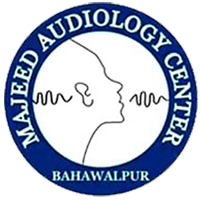Hearing health is a critical part of our overall well-being, and various tests help assess different aspects of ear function. One such essential diagnostic test is Tympanometry, which evaluates the condition of the middle ear and how well it functions. It is particularly useful in diagnosing middle ear problems, including fluid buildup, eardrum issues, and Eustachian tube dysfunction. At Majeed Audio-Vestibular Clinic, we offer advanced tympanometry testing to ensure accurate diagnoses and effective treatments for our patients.
What is Tympanometry?
Tympanometry is a non-invasive, painless test that assesses the middle ear’s function by measuring how the eardrum (tympanic membrane) responds to changes in air pressure. The middle ear includes the eardrum and three tiny bones that transmit sound vibrations to the inner ear. Tympanometry helps identify any abnormalities in this region, including the presence of fluid, eardrum perforations, or stiffening of the bones.
This test is particularly valuable for detecting problems that can affect hearing, especially in children, where middle ear infections are common.
How Does Tympanometry Work?
The tympanometry test involves the following steps:
- Preparation: The audiologist or healthcare provider will place a small, soft probe at the entrance of the ear canal. The patient is asked to remain still and quiet during the test.
- Pressure Changes: The probe alters the air pressure in the ear canal, creating slight pressure variations that cause the eardrum to move.
- Response Measurement: As the eardrum moves in response to the pressure changes, the device measures its movement and records the results in the form of a tympanogram.
The tympanogram provides a graphical representation of the eardrum’s mobility. Based on the results, the audiologist can determine whether the middle ear is functioning properly or if there are any abnormalities, such as fluid behind the eardrum, which could indicate an infection or other issues.
What Does Tympanometry Detect?
Tympanometry is a valuable tool for diagnosing several middle ear conditions, including:
- Middle Ear Infections (Otitis Media): This test can detect fluid in the middle ear, even when there are no visible symptoms of infection. Otitis media is one of the most common causes of hearing loss in children.
- Eustachian Tube Dysfunction: The Eustachian tube helps regulate pressure in the middle ear. If it becomes blocked or fails to function properly, it can lead to discomfort, hearing loss, or middle ear problems.
- Perforation of the Eardrum: Tympanometry can detect a hole or tear in the eardrum, which may result from infection, trauma, or sudden pressure changes.
- Otosclerosis: This condition involves abnormal bone growth in the middle ear, which can restrict the movement of the tiny bones and lead to hearing loss.
- Earwax Blockages: While not a primary purpose of tympanometry, the test may sometimes help identify significant earwax buildup that could be affecting hearing.
Why is Tympanometry Important?
Tympanometry is an essential diagnostic tool because it provides valuable information about the middle ear that cannot be obtained through other hearing tests. It is particularly useful for:
- Children prone to ear infections: Tympanometry helps detect ear infections early and monitors ongoing conditions.
- Diagnosing the cause of hearing loss: It helps distinguish whether hearing loss is due to middle ear problems or other underlying conditions.
- Monitoring chronic middle ear conditions: For individuals with recurrent or chronic middle ear infections, tympanometry is a reliable method to track the progress of treatment.
What to Expect During a Tympanometry Test
The tympanometry procedure is quick, taking just a few minutes to complete. Patients may feel slight pressure changes in their ears, similar to the sensation of ascending or descending in an airplane. The test is painless, and there are no risks involved.
Who Should Get a Tympanometry Test?
Tympanometry is often recommended for individuals who experience:
- Frequent ear infections or fluid buildup in the ear
- Persistent ear pain or discomfort
- Hearing loss that may be related to middle ear issues
- Tinnitus (ringing in the ears) or a sensation of fullness in the ear
- Balance problems that could be related to middle ear dysfunction
Parents of young children should be especially mindful of their child’s ear health, as untreated middle ear infections can lead to more serious complications, including permanent hearing loss.
Tympanometry at Majeed Audio-Vestibular Clinic
At Majeed Audio-Vestibular Clinic, we use advanced tympanometry equipment to diagnose and treat a wide range of middle ear conditions. Our expert audiologist, Dr. Shahid Majeed, is dedicated to providing comprehensive care for patients of all ages, ensuring that each individual receives the highest quality treatment for their hearing health.
Conclusion
Tympanometry is a vital diagnostic tool that helps detect and manage a variety of middle ear conditions. Whether you are dealing with chronic ear infections, hearing loss, or Eustachian tube dysfunction, tympanometry can provide the information needed for accurate diagnosis and effective treatment.
For expert ear and hearing assessments, visit us at Majeed Audio-Vestibular Clinic, located at Model Town A, Aziz Bhatti Road, Adjacent Pace Plaza, Galaxy Heights Hotel, Bahawalpur. You can contact us via email at macbahawalpur786@gmail.com or call +92 336 689 0000 to schedule your appointment today.

